Share
Working at ESO
Are you interested in working in areas of frontline technology and in a stimulating international environment? Do you feel your profile matches our requirements? Learn more about our current vacancies and apply online. Read more..
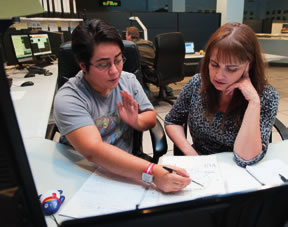
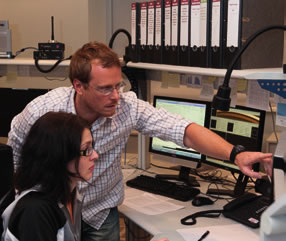

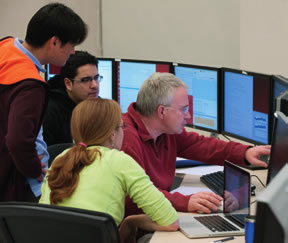
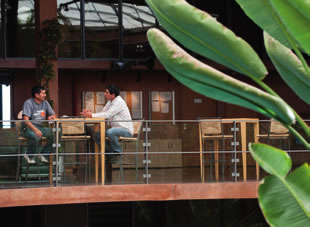
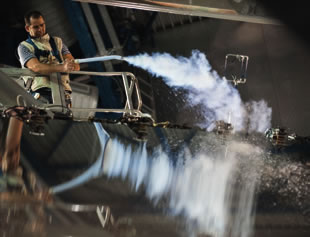
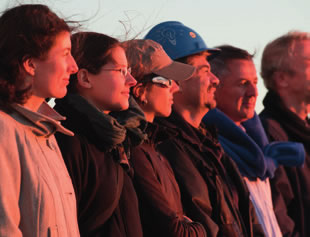
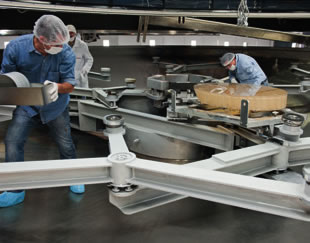
The European Organisation for Astronomical Research in the Southern Hemisphere (ESO) is the foremost intergovernmental astronomy organisation in Europe and the world's most productive ground-based astronomical observatory. ESO carries out an ambitious programme focused on the design, construction and operation of powerful ground-based observing facilities enabling astronomers to make important scientific discoveries. ESO operates three unique world-class observing sites in the Atacama Desert region of Chile: La Silla, Paranal and Chajnator. The ESO headquarters are located in Garching, near Munich, Germany.
At Paranal, ESO operates the Very Large Telescope, the world's most advanced visible-light astronomical observatory. ESO is a major partner in ALMA, the largest astronomical project in existence. And on Cerro Armazones, ESO is building the 39-metre European Extremely Large Telescope, which will become "the world's biggest eye on the sky" and whose operations will be fully integrated into the Paranal Observatory.
For its Maintenance, Support and Engineering (MSE) and Science Operations Department at the Paranal Observatory, ESO is inviting students from European and Chilean Universities in their career's last period, to participate in the following programme:
Winter Students 2020
Paranal
Deadline 07/02/2020
The MSE Department of the Paranal Observatory provides technical support to the four VLT 8-m telescopes, to the VLT Interferometer with its auxiliary telescopes and to all instruments available for scientific observations. The telescopes and instruments are complex systems that involve many advanced technologies and require a high level of engineering support. The MSE Department of Paranal has a total workforce of 67 engineers and technicians distributed in 5 engineering groups.
The three projects for the Winter period 2020 are the following:
I. "Explore new ways of measuring scattering on telescope mirrors and in-situ cleaning for 8-40m telescopes"
When propagating through the atmosphere (especially up to 35km or so), some of the laser photons from the 4LGSF experience inelastic scattering events with air molecules (known as Raman scattering), including N2 and O2 (Vogt et al., 2017). The monitoring of the flux of these laser lines in MUSE WFM-AO observations over a 27-months period revealed that dust particles on the primary mirror of UT4 are largely responsible for bringing these Raman-scattered photons (emitted in the lasers up-link beams, outside of the MUSE field-of-view) onto the detector (Vogt et al. 2018).
This offers a spectacular and unprecedented opportunity for the observatory to monitor the integrated scatter properties of the UT4 mirror over time, without contact, and on a sub-hour frequency (given that MUSE is the most widely used instrument at UT4). The ESO archive already contains several years of MUSE WFM-AO data suitable for this analysis. The MUSE pipeline was also recently upgraded to automatically fit the two main Raman lines automatically (although this feature supposedly works best for empty/sparse fields).
Using this dataset, the efficiency of CO2 cleanings can then be put in perspective with 1) the gain (in reduction of the Raman line flux) achieved with a full recoating, and 2) their ability to slow down the deterioration of the scatter properties of the UT4 mirror over time.
This will be the first time that any observatory can properly quantify the efficiency of CO2 cleanings. This has numerous critical implications for the VLT and for the ELT, including as a means of monitoring the state of the different mirror segments, and would aid in the identification of the best cleaning approach.
Objectives:
Part 1 (under supervision of PSO): modify MUSE pipeline to extract automatically Raman line flux and environmental parameters (aprox 3 months)
1) Reduce as many archival MUSE WFM-AO observations as possible (since the last UT4 recoating), in order to extract the associated Raman line fluxes. This extraction will work best for "sky" fields and empty fields, which probably ought to be processed first. The existing data pipeline should be used to automate data extraction. The resulting time series of Raman line fluxes should then be correlated with the airmass of each observations, and the different environmental parameters, including wind-speed, integrated particle counts over time (since the Raman lines are sensitive to the total amount of dust deposited on the mirror, and NOT to the instantaneous particle count), humidity, etc .
Part 2 (under supervision of MSE): Analyze scattering data versus environmental and operational conditions (aprox 3 months)
2) Check if data correlates with the timing of the past CO2 cleanings. Quantify the impact of environmental conditions (like high-particle-count or high-humidity nights) on the scatter properties of the UT mirrors in terms of the lifetime of the coating, in order to set data-driven operational limit.
3) If prior steps are successful, characterize the efficiency of CO2 cleanings, and determine "ideal" cleaning frequencies (as a function of TBD parameters). Propose and test a strategy to compare in-situ cleaning methods using CO2 snow and ionized air. Support design and preparation of tooling for the ionized air cleaning. Perform a trade-off analysis between methods and conclude on the possible improvements for VLT and ELT mirror maintenance.
Student Profile:
Student from a Mathematics, Natural Science (Physics, Astronomy) or Engineering career (ideally Optics) with interest in data science AND instrumental experimentation:
- Student in the last years of education or able to justify already some advanced knowledge
- Advanced knowledge of python programming language
- Basic knowledge of astronomical observations and methods is desirable
- Basic knowledge of optics (including optical scattering) is desirable
- Interest for practical experimentation to clean large astronomical mirror
Duration and Shift:
3 to 6 months from April-June 2020. The working schedule will be 8 days on duty and 6 days off duty (8x6) with accommodation provided on site, or mixed scheme including work in Santiago.
II. "Development of Health-Check and Performance monitoring tools for the Adaptive Optics Facility (AOF) of the Paranal Observatory"
The AOF equips one of the VLT Unit Telescopes at ESO's Paranal Observatory in Chile. It is composed of four Sodium Lasers to generate artificial Guide Stars (4LGSF), a Deformable Secondary Mirror (DSM), two Wavefront Sensor modules (GRAAL and GALACSI), Real-Time Computers (SPARTA) and other auxiliary equipment.
This facility is currently feeding the MUSE and HAWK-I instruments with AO-corrected Wavefronts and is available to the Science community since several years. In the future it will also feed the new instruments ERIS and MAVIS. Technical templates are executed during the day and the night to record data informing on the Health and Performance of the AO systems, but for the moment the processing of this raw data is not automated.
The goal of the traineeship would be to process the data and crunch it into meaningful Health Check and Performance Monitoring criteria that should be displayed on the new Paranal analysis tools that are based on Grafana and Jupyter Notebooks.
Objectives:
The traineeship includes the following tasks:
- Getting familiar with AO and the AOF
- Getting familiar with Datalab
- Define with supervisor possible criteria for meaningful Performance and Health Check parameters
- Use test data to develop offline the algorithms for raw data reduction into those criteria
- Implement the codes in Datalab
- Develop the trending displays in Grafana and include threshold and alarms
- Provide tutorials for the creation of raw-data reduction routines,
- Provide final report.
Depending on the duration of the traineeship and the progress of the student, this work could be extended to a) the implementation of new Matlab algorithm in the SPARTA internal data processing and/or b) the extension of this work to other AO instruments.
Student Profile:
The candidate shall be in its 4th or 5th year of a university career in computer science, physics or engineering. He/She shall be proficient in data processing with Python and Matlab, proficiency with Pandas, ScyPy, Numpy matplotlib is required. Familiarity with Matlab and other Python scientific oriented libraries highly desirable. He/She must understand how to pre-process data, apply strategies to split datasets, parse logtexts, and has good reporting habits. The trainee shall be fluent in English.
Duration and Shift:
5 to 6 months. The working schedule will be 8 days on duty and 6 days off duty (8x6) with accommodation provided on site.
III. "FIERA to NGC Upgrade Project - NGC AIT phase"
As part of the Obsolescence plan, the Detectors Readout Electronics Systems currently used in the first Instruments generation of the Paranal Observatory are no longer maintained nor produced by ESO. One of these are the FIERA Detector Control Electronics. The New General Detector Controller (NGC) evolved from over 30 years of previous controller generations, namely ESO IRACE and FIERA systems, IR and CCD detectors respectively. The FIERA to NGC upgrade project started and is in its first phase. This project has several work packages which will need some extra-effort to be completely successfully. Specifically, to be carried out by the winter student: NGC AIT phase.
Objectives:
Work Package: NGC Assembly, Integration and Testing (AIT) Main Tasks to be developed by the winter student:
- Tests of the new readout clock patterns with the Oscilloscope.
- CCD and Cryostat TeePee controller testing.
- Shutter Interfacing: Participation in the fabrication, interface and testing.
- Support for the full system testing.
These tasks might be part of his/her undergraduate thesis.
Student Profile:
- Electrical/Electronics Engineer in his/her last career year.
- Design electronic schematic and corresponding layout design;
- Electronics Hardware Assembly experience is desirable.
- Experience with SW languages, such as MATLAB or Python;
- Knowledge basics in the field of Astronomical Instrumentation or equivalent, are desirable.
Duration and Shift:
6 months from March-April 2020. The working schedule will be 8 days on duty and 6 days off duty (8x6) with accommodation provided on site.
We Offer:
ESO offers a special allowance during the period you are performing your apprenticeship with us; transportation arrangements (plane tickets) from and to Santiago are provided by ESO, with accommodation provided on site. We also cover the cost of an International return trip from/to for students from European universities. The Duty Station is Paranal Observatory, in the II Region, 150km South of Antofagasta.
Application:
We invite all students from European and Chilean Universities in their career's last period to apply. The apprenticeship should be supported by the University (Letter should be provided). If you are interested in working in areas of frontline technology and in a stimulating international environment, you are invited to apply online at http://recruitment.eso.org/.
Applications must be completed in English and should include a CV and a motivational letter indicating the project(s) you are interested to apply to.
For further information on Paranal Engineering internships, we invite you to take a look at the following page: http://www.eso.org/sci/facilities/paranal/paranalenginternship.html
Deadline for applications is 7 February 2020.
The post is equally open to suitably qualified candidates irrespective of gender, age, disability, sexual orientation, race or religion.
